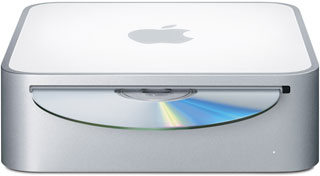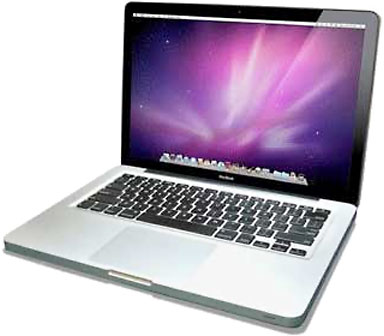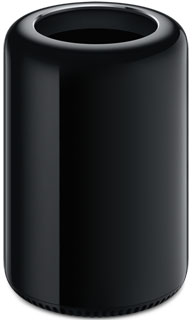For nearly as long as I’ve published Low End Mac, we’ve had the “Road Apples” category for Macs that we felt didn’t live up to their potential (here’s an archive link to the 1998 Road Apples index). Sometimes it was because of hardware architecture. Sometimes it was because of unnecessary memory ceilings. And much of the time it was because of limited upgrade options.
Truth be told, most people who buy a computer – Mac or PC – never upgrade system memory, hard drives, video cards, operating systems, or even a laptop battery well past its prime. Most computer owners upgrade by buying a new computer, not improving the one they have. I’ve heard that over 80% of computer owners never upgrade their hardware, and even with free upgrades available, most never upgrade their operating system either – although Microsoft has been doing its best to get them on Windows 10.
Low End Mac people are a different breed, a lot like PC geeks. We know how much better our Macs will be with more memory, a faster hard drive, or an SSD. We know when a video card will improve performance. And we’re willing to invest good money in aging hardware to make it better rather than buy a new computer every 2, 3, or even 4 years.
We Are a Vocal Minority and Love Our Macs
I have two Macs that I use regularly, and another I use once in a while.
My Upgrade Mac mini
My workhorse is a Mac mini running OS X 10.6 Snow Leopard, the last version that can run PowerPC apps like AppleWorks and Microsoft Office 2004. It’s at maximum memory and has an SSD.
 It’s the Mid 2007 model, a 2.0 GHz computer with 3 GB of RAM. It came out nearly nine years ago, I bought it second-hand in 2011, and while faster would be nicer, it’s adequate to the task at hand. (Our internet connection is a bigger bottleneck than the computer when doing a search and replace in our content management system.)
It’s the Mid 2007 model, a 2.0 GHz computer with 3 GB of RAM. It came out nearly nine years ago, I bought it second-hand in 2011, and while faster would be nicer, it’s adequate to the task at hand. (Our internet connection is a bigger bottleneck than the computer when doing a search and replace in our content management system.)
This computer has been significantly upgraded. From its original 1 GB of memory, I went to the maximum of 3 GB. The original hard drive was replaced by a high performance 7200 rpm Scorpio Black, and when that started having problems, I installed an SSD. It unleashed every last bit of performance – short of replacing the CPU. I haven’t looked into how far I could take it, but I think 2.6 GHz may be possible.
My Upgraded MacBook
The Mac I use next most is my MacBook, which was upgraded to 4 GB of RAM (from its original 2 GB) before I got it – it was a very generous donation! – and it can go to 8 GB for about $50 these days. It had a fast replacement hard drive, another Scorpio Black, that I replaced with an SSD earlier this year.
 This is my newest computer, a Late 2008 Aluminum MacBook, and as 2.0 GHz with 4 GB of memory and an SSD, it’s a pretty decent performer. It could use a new battery, though. The original won’t last an hour.
This is my newest computer, a Late 2008 Aluminum MacBook, and as 2.0 GHz with 4 GB of memory and an SSD, it’s a pretty decent performer. It could use a new battery, though. The original won’t last an hour.
I usually use OS X 10.9 Mavericks on it, but I also have 10.11 El Capitan installed, and it runs that – the current version of OS X – comfortably. Not bad for a model that will celebrate its 8th birthday in October.
My Upgraded Power Mac G5
 I rarely power up my Late 2005 Power Mac G5 Dual. With its 2.3 GHz dual-core G5 CPU, it has the highest clock speed of any of my Macs. This powerful 64-bit beastie is nearly 11 years old, has 3 GB of memory, and mostly sits around until I have a reason to use Mac OS X 10.4 Tiger or 10.5 Leopard.It’s a perfectly usable computer, but Intel Macs have much more up to date browsers. (Thank you, TenFourFox developers, for keeping one good browser up to date on PowerPC Macs!)
I rarely power up my Late 2005 Power Mac G5 Dual. With its 2.3 GHz dual-core G5 CPU, it has the highest clock speed of any of my Macs. This powerful 64-bit beastie is nearly 11 years old, has 3 GB of memory, and mostly sits around until I have a reason to use Mac OS X 10.4 Tiger or 10.5 Leopard.It’s a perfectly usable computer, but Intel Macs have much more up to date browsers. (Thank you, TenFourFox developers, for keeping one good browser up to date on PowerPC Macs!)
This is a powerful computer with a Geekbench 2 score of 2007 in Leopard, 2066 in Tiger. The 2.0 GHz Mac mini has a Geekbench score of 2604 (Leopard) and 2668 (Tiger), and the MacBook 2708, so the G5 has about 70% as much processing power – not bad for my third fastest Mac.
It has Nvidia GeForce 6600 graphics, an okay 80 GB Maxtor hard drive, and a nice 20″ 1600 x 1200 Dell display – one of a trio of such monitors used with my work computers. I could upgrade to a 7200 rpm drive cheaply or an SSD economically, but I doubt I’ll ever have a reason to upgrade it any further. It works well, but I just don’t use it often enough so spend more money on it.
Living the Low End Dream
If the Mac mini had shipped with 1 GB of RAM and no upgrade option, I never would have bought it and it would probably still be running OS X 10.5 Leopard. If the MacBook had come with 2 GB of RAM and no upgrade option, it would be useful with OS X 10.6 Snow Leopard, but I would never have gone beyond that point.
I can dream about a quad-core or i7 Mac mini or a “cheese grater” Mac Pro and a 17″ MacBook Pro, but whatever direction I go in the future, it’s probably going to be a Mac mini or Mac Pro that can run Snow Leopard and supports 8 GB of RAM. I hate the loss of Save as… that began with OS X Lion and just can’t get used to using Duplicate instead. I use Preview to open a lot of image files and Save as… Photoshop or PNG.
In the field, a bigger screen than my 13-incher would be welcome, as would 8 GB of memory. This would be my “new macOS” machine. I’d start out with Mavericks and definitely give Sierra a try.
In both cases, I would transplant the SSDs in my current Mac mini and MacBook to their replacement. Some extra speed and memory would be nice, but they say the good is the enemy of the better, and having perfectly adequate Macs today, I am in no hurry to spend money on something faster.
Whatever, unless it has 8 GB or can be upgraded to 8 GB, I won’t even consider it.
We Are the Exception
 Apple realizes that geeks are an exceedingly small minority among Mac users, who are probably even less likely to upgrade hardware than PC users. Because of that, Apple has made most of its computers a lot less expandable than older models. You can’t even put a hard drive or DVD drive in the current Mac Pro – you have to buy more costly external drives if you choose that computer. Yet power users are buying it.
Apple realizes that geeks are an exceedingly small minority among Mac users, who are probably even less likely to upgrade hardware than PC users. Because of that, Apple has made most of its computers a lot less expandable than older models. You can’t even put a hard drive or DVD drive in the current Mac Pro – you have to buy more costly external drives if you choose that computer. Yet power users are buying it.
Sure, we geeks moan the loss of internal drive bays and easy access to memory upgrades, but we can always pick up a 2012 Mac Pro or earlier to meet our needs. Apple doesn’t feel a need to support our power user upgrade habits.
For entry level Macs, in most cases the memory is soldered into place, and some newer models even solder the SSD in place. You want an upgrade? Buy a Mac with the configuration you want if it’s a model with few or no hardware upgrade options. It’s just a whole lot simpler for Apple to offer custom configurations from the factory and not worry about you buying an entry-level Mac that you can upgrade yourself for a lot less money.
No, I don’t like it, and most of the people who have ever written for Low End Mac don’t like it, but we are not Apple’s target market. Apple’s goal for Macintosh has always been It just works. And with a fast processor, enough memory, enough storage capacity, and good graphics, today’s Macs are going to keep most buyers happy for years to come.
How Much Is Enough?
I don’t like to see computers sold that aren’t future-proof, at least to some extent. Those old MacBook Air models with 2 GB of RAM are only well suited for OS X 10.6 Snow Leopard. OS X 10.7 Lion and later need more memory to unleash their potential. As far as Snow Leopard goes, the 2 GB MacBook Air models with SSDs – not those horrid 1.8″ iPod hard drives – are just fine. They can run Lion, but that’s pretty much as far as I’d want to go with 2 GB of memory.
Then Apple started offering Macs with 4 GB of memory soldered in place. They will run at least through OS X 10.9 Mavericks decently. Coupled with an SSD, which really lets loose the use of virtual memory, a 4 GB Mac can probably run OS X 10.11 El Capitan and forthcoming macOS Sierra decently. Not awesomely, but comfortably enough for most users.
The problem is, SSDs eat themselves. Each memory cell can be written to a limited number of times, and then it becomes unusable. Vendors may address this by giving you a 512 GB SSD and calling it 480 GB. This is over-provisioning, and it means the 32 GB is set aside to replace memory cells that fail.
Given enough write cycles – and that is a huge number – at some point every SSD could become unusable. No, you’re not likely to see it happen in your lifetime unless you’re running a busy database from SSD, but virtual memory means your Mac is constantly writing to its hard drive or SSD. And the less RAM you have, the more your Mac depends on the SSD, the faster is wears out. Yes, hundreds of thousands of write cycles, but how much is being written to your SSD on a 4 GB Mac, let alone a 2 GB MacBook Air?
Future Proofing
Our latest round of “compromised Mac” labels went to Macs with 4 GB of fixed system memory across the board. Sure, 4 GB will run Snow Leopard, Lion, Mountain Lion, and Mavericks nicely for most users. It may run Yosemite, El Capitan, and Sierra decently as well. But it’s causing unnecessary wear and tear on your SSD. Further, relying on virtual memory all the time (not just having it in the background, but constantly using it) means the computer is never running at its full potential.
Looking forward, at this point I would generally advise against buying a Mac with 4 GB of irreplaceable memory. I would push buyers toward 8 GB for three reasons:
- It will run better today.
- It will make less use of virtual memory, which reduces performance and SSD life.
- Future versions of macOS will undoubtedly be even more demanding of resources, and having 8 GB makes you more ready for that eventuality.
I don’t hate Apple. As a geek, I am frustrated that they seem to care less and less for the needs of nerds. We want upgrade options, and if we’re happy with our Macs, we will steer others toward our platform of choice.
That said, Macs are the only family of personal computers with a growing market these days. Apple is making decisions some of us don’t like, but most users are perfectly happy with buying a computer they’ll never upgrade – or a smartphone or tablet, for that matter.
With iPhones and iPads, the more important choice is storage capacity, since Apple makes no provision for upgrading it. My 8 GB iPhone 3GS kept bumping against its storage limit, as did my 16 GB iPhone 4S. For now 32 GB in my iPhone 5 is more than enough, but that would change in a hurry if I put most of my iTunes library on it.
Macs haven’t suddenly become disposable; they have always had limits. Plan ahead when you buy and you may get a decade or more of use from a Mac with soldered in RAM and SSD. And when you tell your non-geek friends which configuration to buy, make it a bit more future-proof than Apple’s entry level model.
They will appreciate it, and Apple will make a very profitable sale to a very happy customer.
Keywords: #roadapples #futureproof #memoryupgrades
Short link: http://goo.gl/NCmrJv

